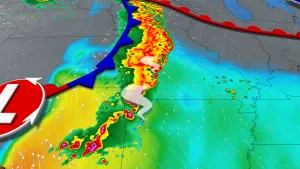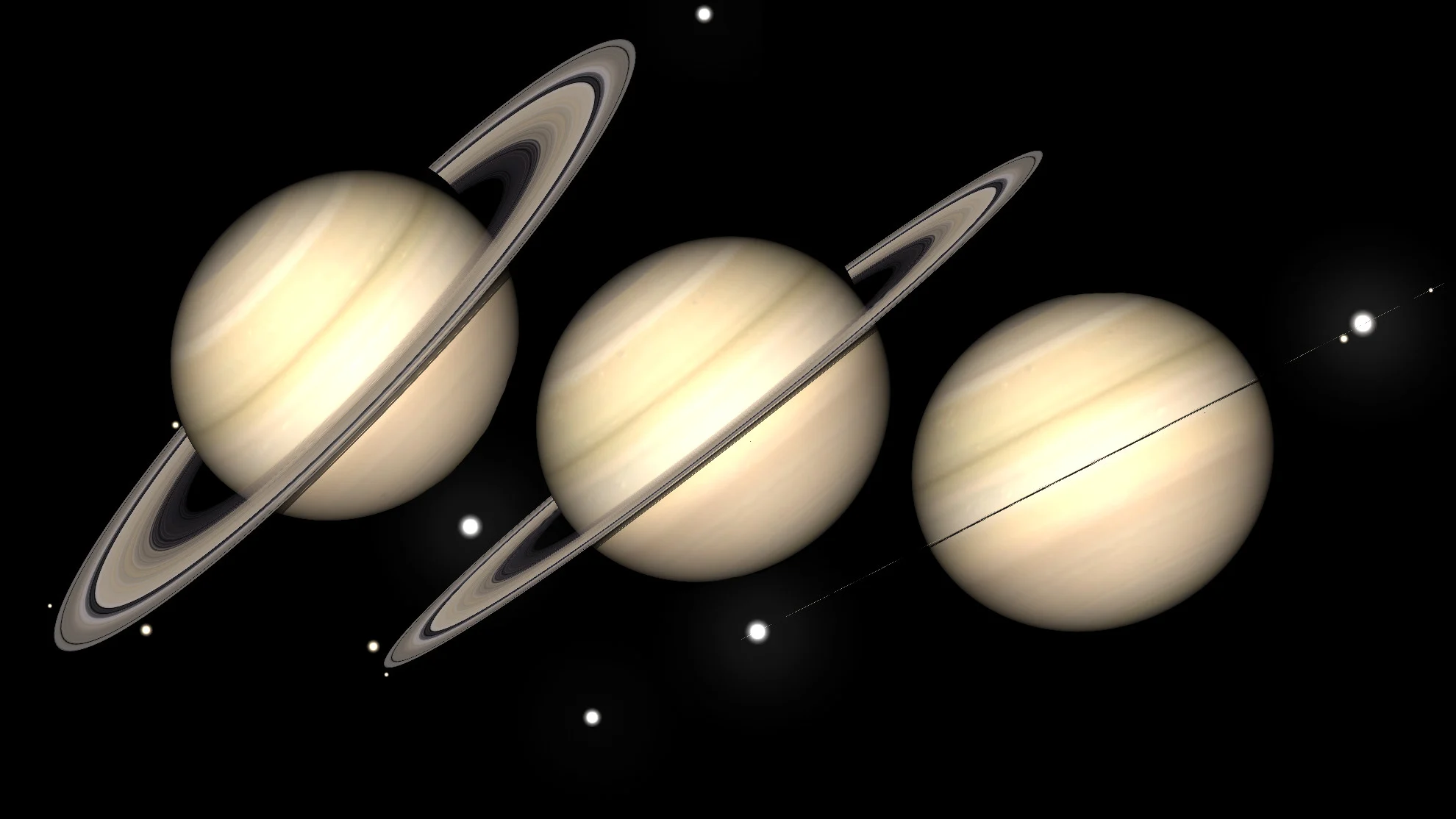
Saturn's rings will 'disappear' in less than 2 years
If you have a telescope or a pair of binoculars, you may want to keep an eye on Saturn for the next year or so.
Saturn's beautiful system of rings will completely disappear over the next 300,000 years, but over the next two years we're going to get a preview of this thanks to a relatively rare celestial event.
The sixth planet from the Sun is a natural wonder. In addition to being the current "Moon King" of the solar system, it's immense, bright rings have wowed us for centuries.
NASA spacecraft like Pioneer 11, the Voyager probes and Cassini revealed Saturn's rings in stunning detail. Telescopes such as Hubble and JWST have imaged them as well. However, anyone with a small backyard telescope, or even a pair of binoculars, can see them on a clear night.
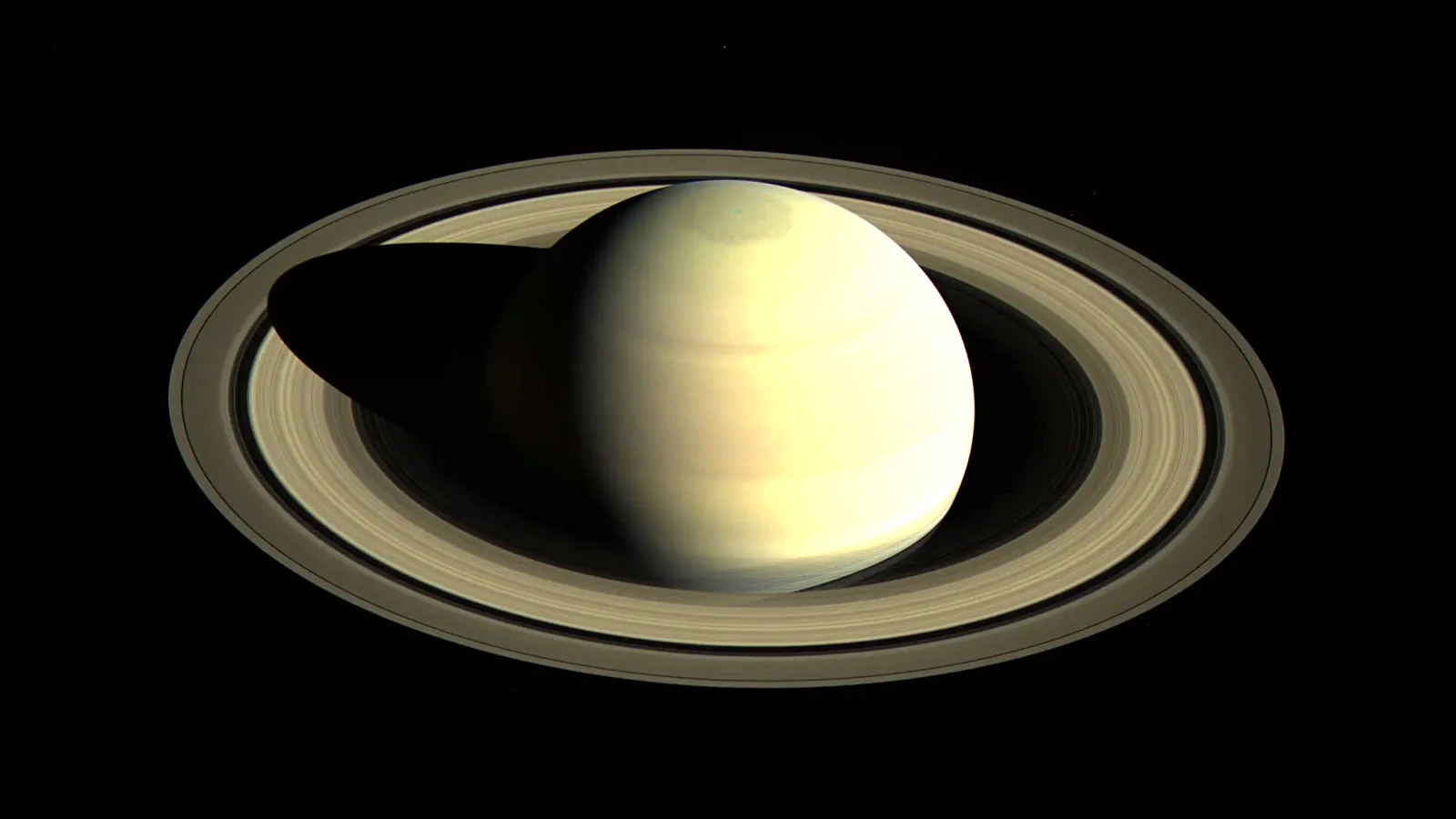
This view shows Saturn in 2016, taken by the Cassini spacecraft as it orbited the planet. The north pole was nearly in full view as Saturn approached northern hemisphere summer solstice in May 2017. Credit: NASA/JPL-Caltech/Space Science Institute
That's going to change as we approach March of 2025, though. The spectacular rings are going to gradually fade from sight over the next fifteen months.
You see, just like Earth, Saturn is tilted on its axis. So, as it orbits around the solar system, it goes through seasons, with the northern hemisphere pointed more towards the Sun for one half of that journey and the southern hemisphere pointed more towards the Sun for the rest. Since the planet's rings are aligned with Saturn's equator, they follow the same pattern.
READ MORE: Winter 2023-2024 could be best in years for observing the night sky
Northern summer on Saturn began back in May of 2017. In the years since then, summer has waned for the ringed planet and over the next fifteen months, it is approaching its northern fall equinox.
When that happens, those of us watching from here on Earth we will experience a 'ring-crossing event' where the planet's rings will appear to vanish.
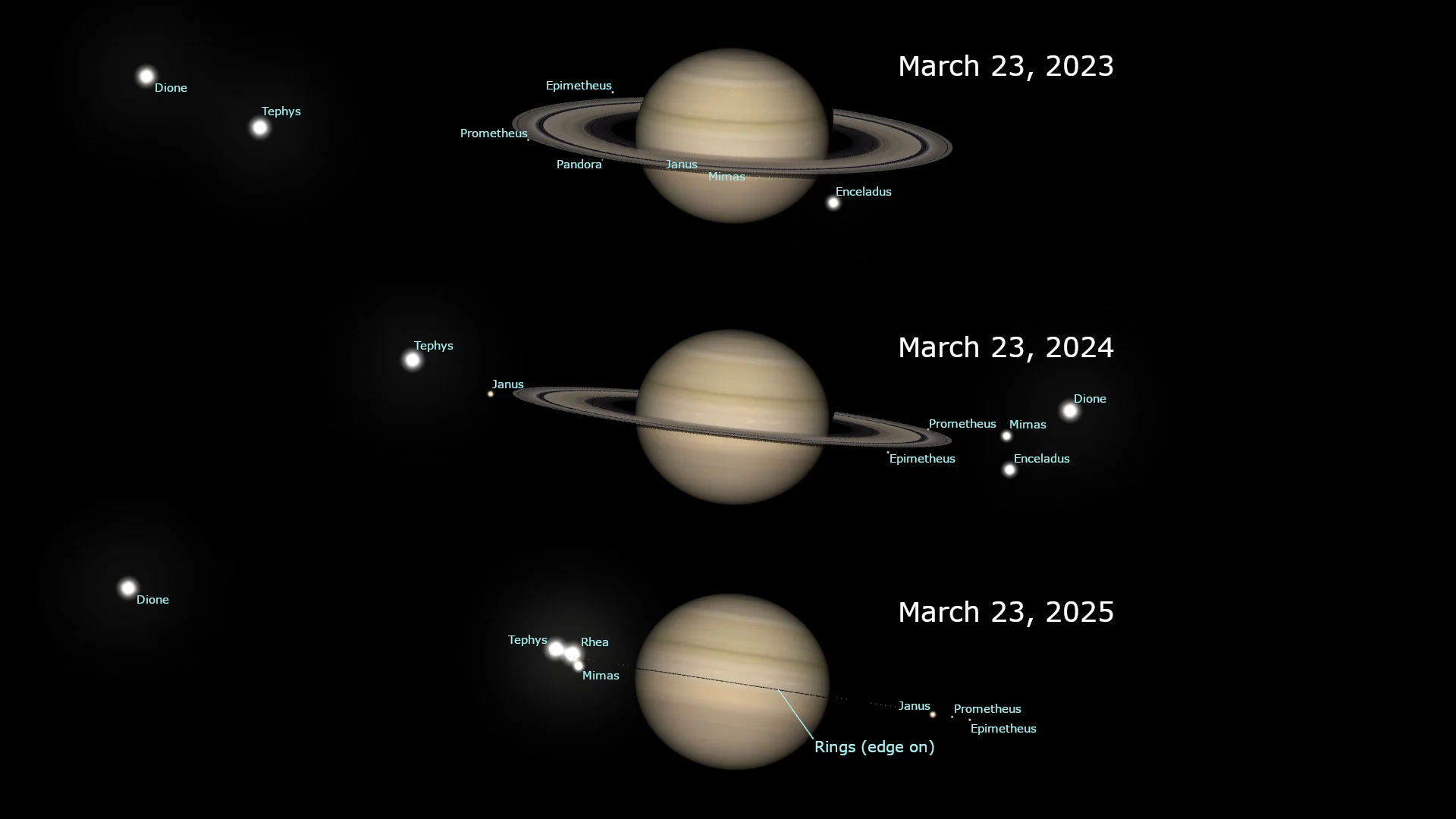
These simulated views of Saturn show the planet as seen from Earth's northern hemisphere in March of 2023, 2024 and 2025. Credit: Stellarium/Scott Sutherland
The rings won't be completely gone, of course. It's simply that we'll be viewing them along their edge. Since the rings are only around 1 kilometre thick, compared to Saturn's 108,728 km polar diameter, they'll be invisible from our point of view.
Following this crossing event, Saturn's rings will slowly come back into view and become easier to see over the months and years leading up to the planet's winter solstice (sometime in the early 2030s). At that time, they will appear at their brightest, and then the whole process begins again.
Ring-crossings — Past and Future
Due to the relative motions of Earth and Saturn around the Sun, it's possible for a few of these ring-crossing events to cluster together. We saw this back in the mid-1990s, when there were ring-crossings in May 1995, August 1995, and February 1996.
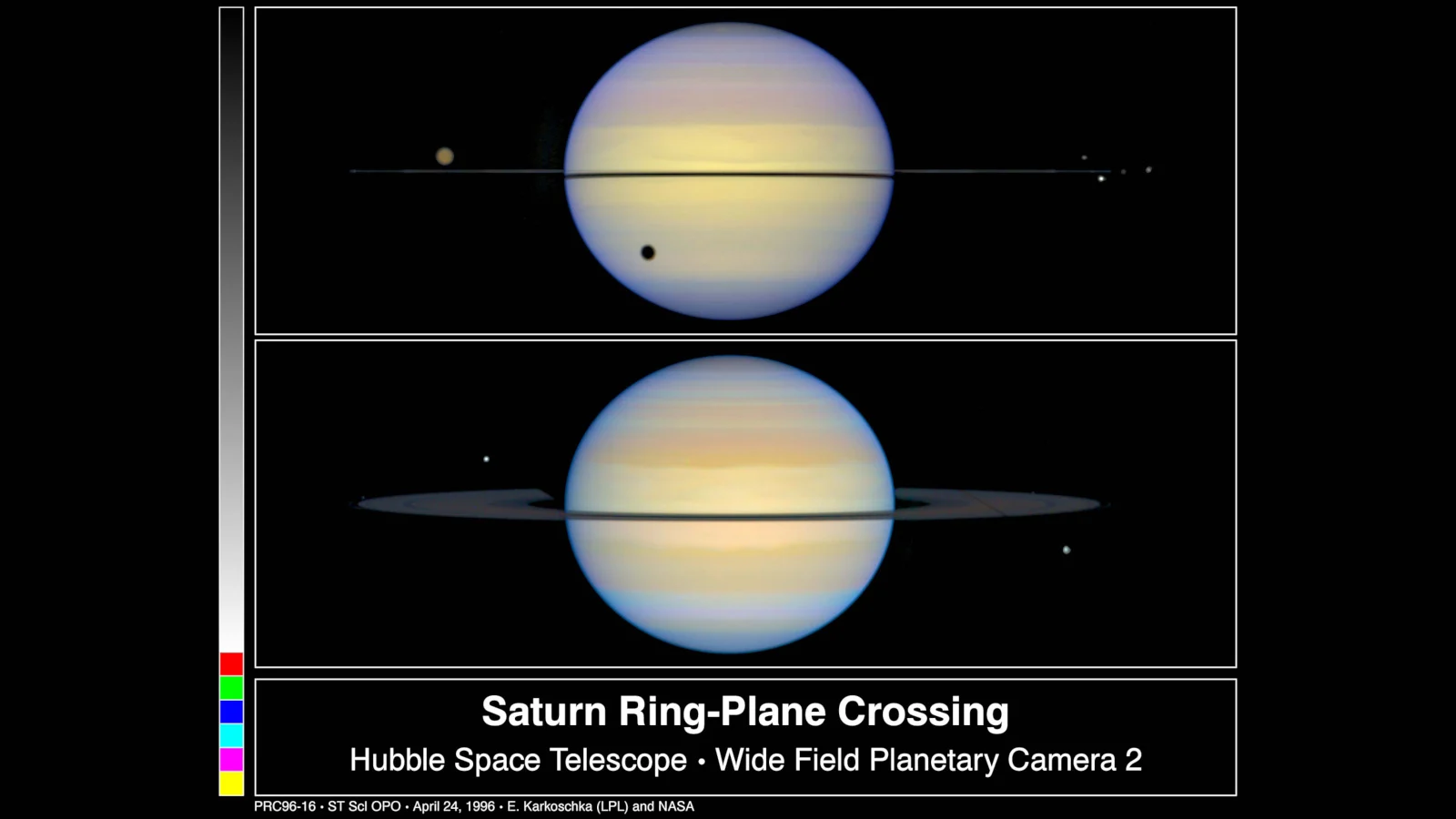
The Hubble Space Telescope captured the August 5 1995 ring-crossing event (top frame), and then took a followup image a little over three months later, on November 17 1995. Credit: Erich Karkoschka (University of Arizona Lunar & Planetary Lab)and NASA/ESA
However, in between these clusters, ring-crossings are fairly rare events.
The last one occurred over 14 years ago, in September 2009. After March 2025, the next one after won't be seen until October 2038, which will kick off another cluster that will include follow-up events in April and July of 2039.
(Thumbnail is a composite of simulated views of Saturn in 2023, 2024 and 2025 from the Stellarium planetarium software.)










